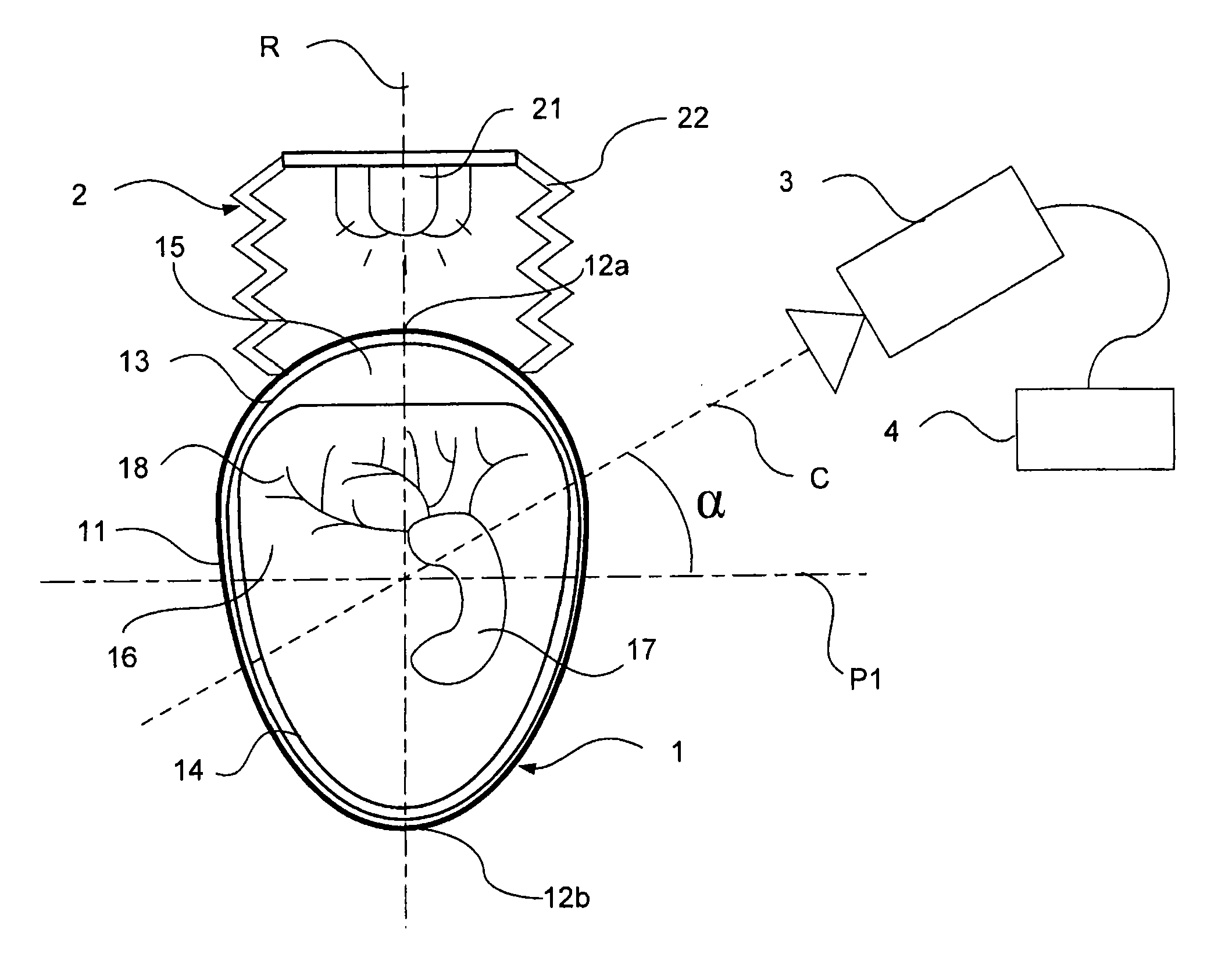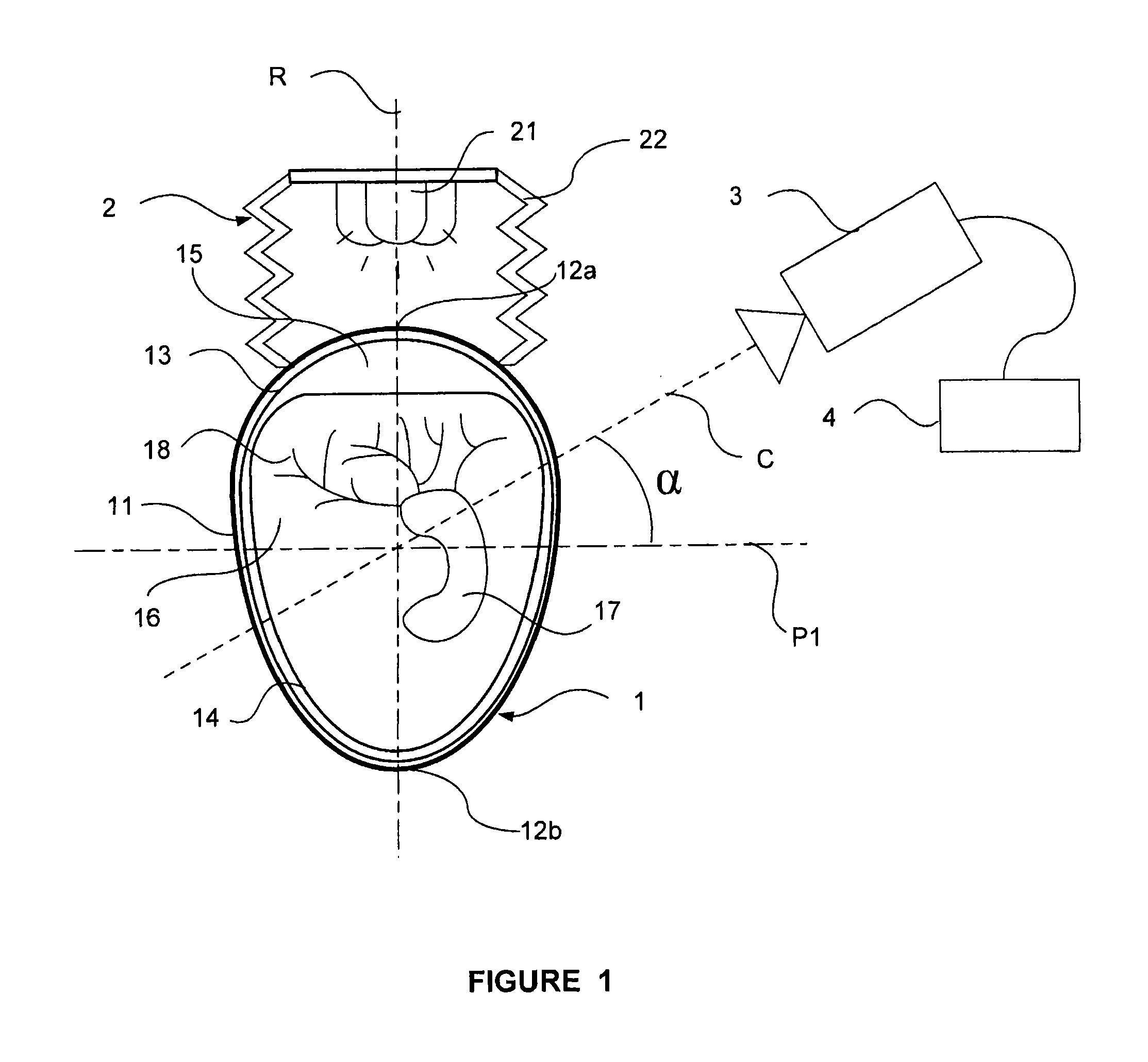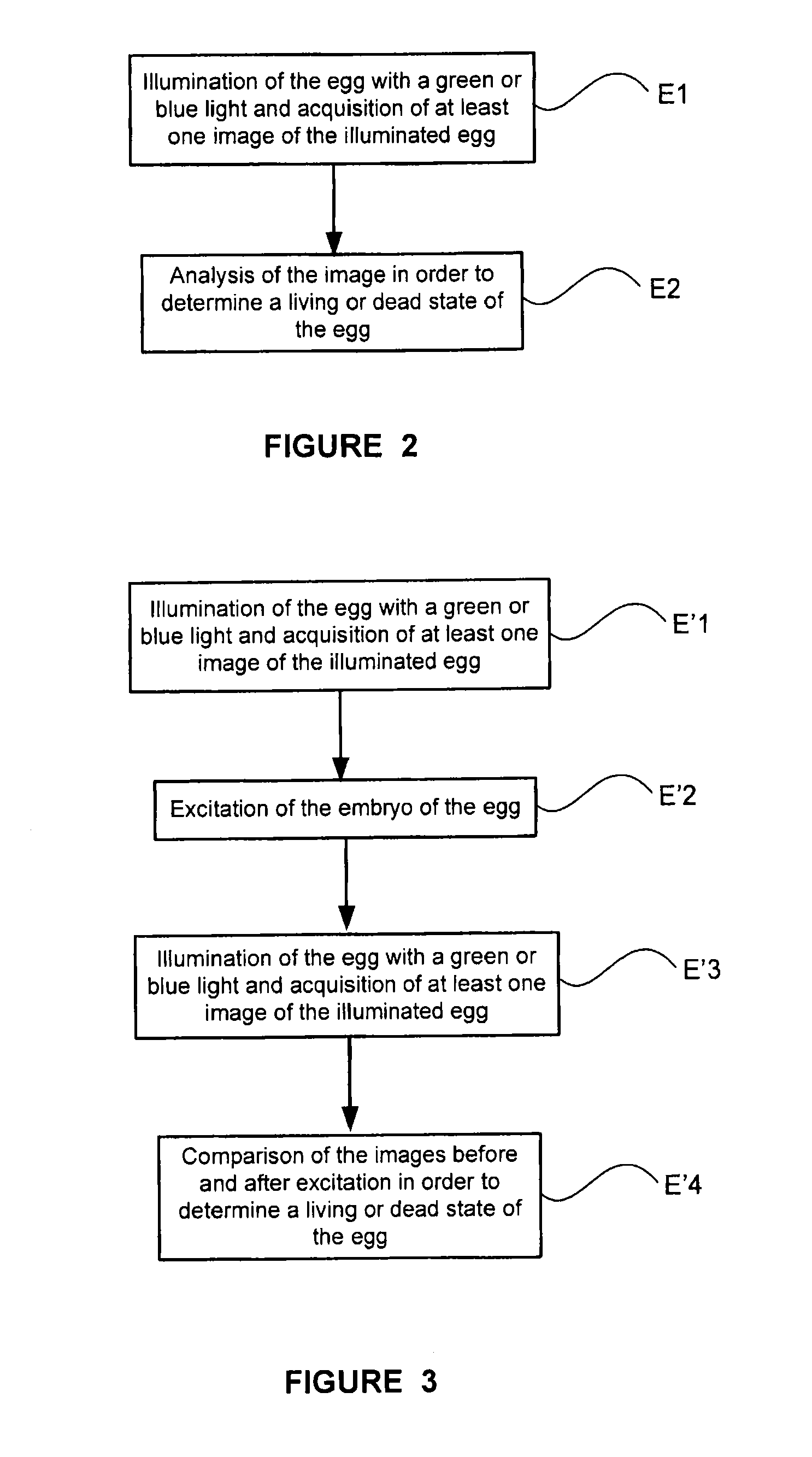Egg candling method and corresponding device
a technology of egg candling and corresponding devices, which is applied in the field of egg candling methods and apparatuses, can solve the problems of not being adapted to be used at a more premature stage of the egg development cycle, not being able to distinguish live eggs with certainty, and not being easy to differentiate from normally-developed eggs
- Summary
- Abstract
- Description
- Claims
- Application Information
AI Technical Summary
Benefits of technology
Problems solved by technology
Method used
Image
Examples
first embodiment
[0053]According to this first embodiment illustrated by FIG. 2, the method of the invention comprises[0054]a step E1 of illuminating at least one portion of the egg to be candled with a green or blue light, preferably green with a length ranging between 530 nm and 550 nm, such as to visually show on the shell of the egg a shadow of the blood network of the embryo if it is present in the egg and acquire at least one image of the illuminated egg; and[0055]a step E2 of analyzing the acquired image in order to determine the presence or not of a blood network in the egg and deduce a living state or a dead state of the egg. The step E2 comprises quantifying the image as to the thickness and / or the length of the dark lines representing the shadow of the blood network of the egg on the shell and comparing these values to reference values which depend on the age of the egg. For a given age, if the thickness value is lower than the reference thickness value for this age and / or if the length v...
second embodiment
[0059]According to this second embodiment, illustrated by FIG. 3, the method of the invention comprises[0060]a step E′1 of illuminating the egg with a green or blue light and of acquisition of at least one image I1 of the illuminated egg by a camera,[0061]a step E′2 of excitation of the embryo of the egg by a stimulus,[0062]a step E′3 of illuminating the egg with the green or blue light and of acquiring, after excitation of the embryo, an image I′1 of the illuminated egg by the same camera, and[0063]a step E′4 of comparison of both images I1 and I′1 to deduce the living or dead state of the egg. If the embryo is living, the blood network and the opaque mass of the embryo change positions in the egg between images I1 and I′1. If images I1 and I′1 are different, one may thus deduce that the egg is in a living state.
[0064]The stimulus employed in step E′2 is a temporary disturbance of the neighboring surroundings of the embryo. It may take the form of a luminous, sound and / or thermal w...
PUM
 Login to View More
Login to View More Abstract
Description
Claims
Application Information
 Login to View More
Login to View More - R&D
- Intellectual Property
- Life Sciences
- Materials
- Tech Scout
- Unparalleled Data Quality
- Higher Quality Content
- 60% Fewer Hallucinations
Browse by: Latest US Patents, China's latest patents, Technical Efficacy Thesaurus, Application Domain, Technology Topic, Popular Technical Reports.
© 2025 PatSnap. All rights reserved.Legal|Privacy policy|Modern Slavery Act Transparency Statement|Sitemap|About US| Contact US: help@patsnap.com



